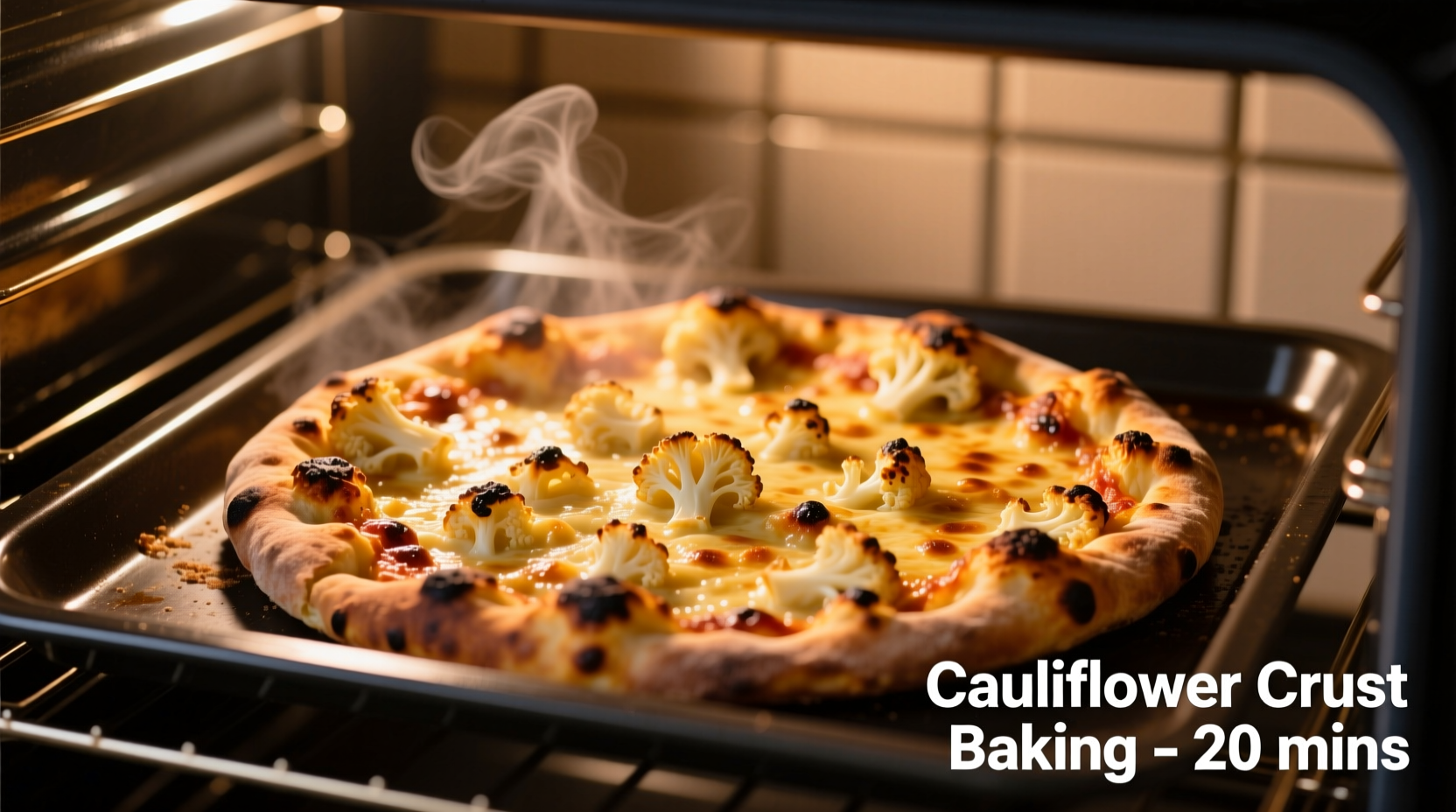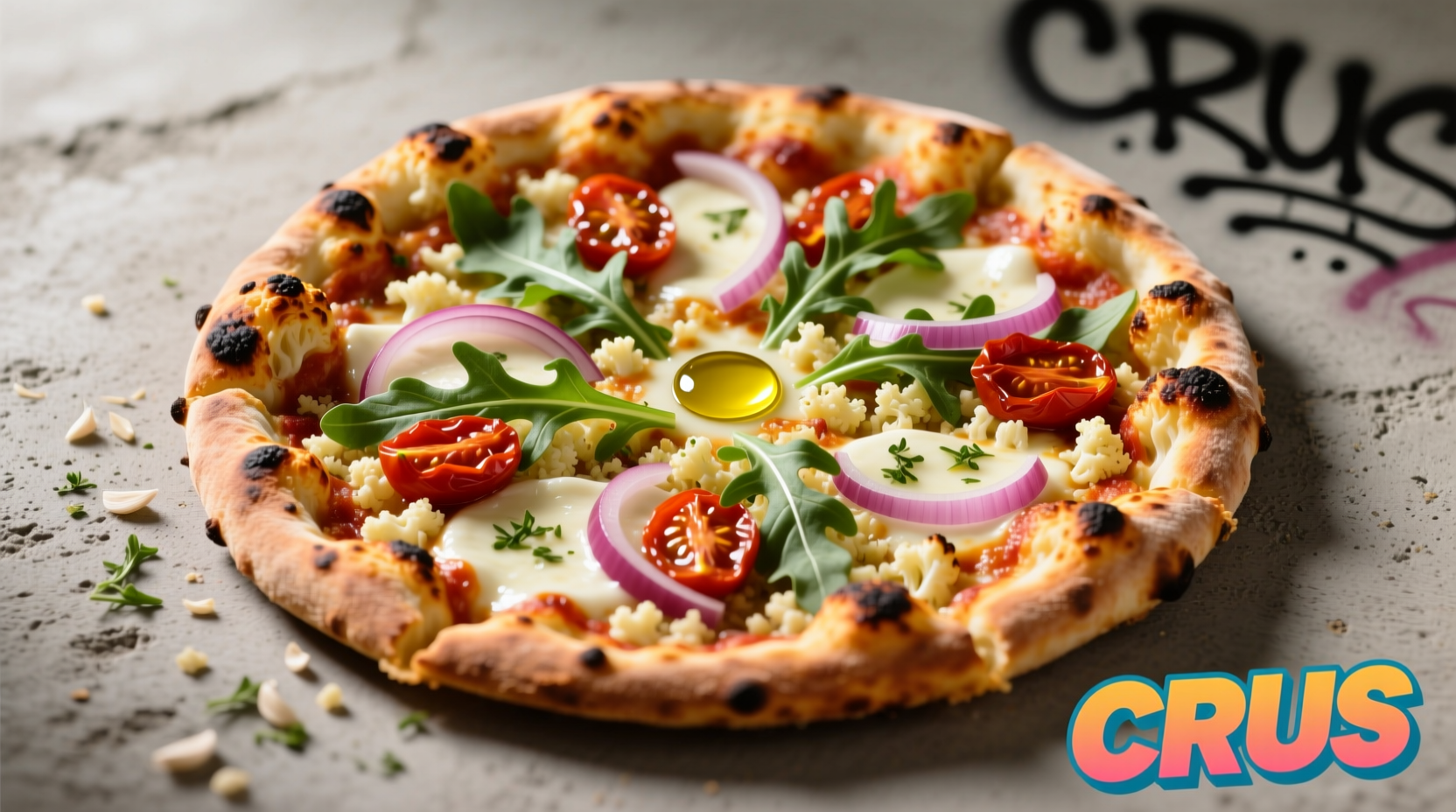If you're searching for a healthier pizza option that doesn't sacrifice flavor, cauliflower pizza crust delivers a gluten-free, low-carb alternative with surprising versatility. Made primarily from riced cauliflower, this innovative crust has gained popularity among health-conscious eaters, gluten-free dieters, and pizza lovers seeking a lighter option without abandoning their favorite food.
What Exactly Is Cauliflower Pizza Crust?
Cauliflower pizza crust replaces traditional wheat flour with finely processed cauliflower as the base ingredient. The preparation process involves ricing cauliflower, removing excess moisture, then binding it with cheese, eggs, and seasonings before baking into a pizza-ready base. Unlike gluten-free flour blends that attempt to mimic traditional dough, cauliflower crust creates a unique texture that's both crispy on the outside and tender within.
Why Home Cooks and Restaurants Embrace This Alternative
Three primary factors drive the growing popularity of cauliflower crust among diverse dietary needs:
- Dietary flexibility - Naturally gluten-free and significantly lower in carbohydrates than traditional crust
- Nutritional enhancement - Adds vegetable content to an otherwise carb-heavy meal
- Texture innovation - Creates a satisfying crispness when properly prepared
| Nutritional Component | Traditional Pizza Crust (100g) | Cauliflower Crust (100g) |
|---|---|---|
| Calories | 270 | 85 |
| Total Carbohydrates | 50g | 5g |
| Dietary Fiber | 2g | 2g |
| Protein | 9g | 6g |
| Fat | 3g | 4g |
Nutritional data sourced from USDA FoodData Central (2023) comparing standard wheat pizza crust to commercially prepared cauliflower crust
Mastering the Moisture Challenge: Key to Success
The single biggest factor determining your cauliflower crust's success is moisture control. Excess water creates a soggy, fragile base that won't hold toppings. Professional chefs recommend this proven moisture removal technique:
- Rice fresh cauliflower in a food processor
- Microwave riced cauliflower for 4-5 minutes
- Transfer to a clean kitchen towel and squeeze firmly for 2 full minutes
- Measure remaining moisture - should feel like damp sand, not wet soil

From Niche Trend to Mainstream Staple: A Timeline
Cauliflower crust's journey from specialty diet option to grocery store staple demonstrates its staying power:
- 2011 - First documented recipe appears in a paleo diet cookbook
- 2015 - Major pizza chains begin testing limited menu offerings
- 2018 - Frozen cauliflower crust options become widely available in supermarkets
- 2021 - Sales of cauliflower pizza crust products grow by 32% year-over-year (IBISWorld Food Industry Report)
- 2023 - Available in 78% of major grocery chains across North America
When Cauliflower Crust Works Best (And When It Doesn't)
Understanding the context boundaries helps set realistic expectations:
Ideal applications:
- Individual-sized personal pizzas
- Lighter topping combinations (vegetables, moderate cheese)
- Gluten-free or low-carb dietary requirements
- Casual weeknight meals rather than special occasions
Limited success scenarios:
- Extra-large pizza formats (beyond 12 inches)
- Heavy meat toppings or excessive sauce
- When seeking authentic Neapolitan-style chewiness
- Commercial settings requiring rapid assembly
Step-by-Step: Creating Perfect Cauliflower Crust at Home
Follow this chef-tested method for reliable results every time:
Ingredients
- 4 cups riced cauliflower (about 1 medium head)
- 1 large egg
- 1 cup shredded mozzarella
- ¼ cup grated parmesan
- 1 tsp dried oregano
- ½ tsp garlic powder
- Salt and pepper to taste
Preparation
- Preheat oven to 400°F (200°C) with parchment paper on baking sheet
- Rice cauliflower florets in food processor
- Microwave riced cauliflower 4-5 minutes, then cool slightly
- Transfer to clean kitchen towel and squeeze out excess moisture for 2 minutes
- Mix dried cauliflower with remaining ingredients until dough forms
- Press mixture into 9-10 inch circle, ¼ inch thick
- Bake crust alone for 18-20 minutes until golden and firm
- Add toppings and bake additional 8-10 minutes
Pro Tips for Optimal Results
- Use fresh cauliflower rather than frozen for better texture control
- Let pre-baked crust cool 5 minutes before adding toppings to prevent sogginess
- Apply sauce sparingly with the back of a spoon to avoid saturation
- Pre-cook watery vegetables like mushrooms or zucchini before topping
- Broil for final 1-2 minutes to maximize cheese browning without overcooking crust
Store-Bought Options Worth Trying
When time is limited, several commercial options deliver quality results:
- Caulipower Original Crust - Balanced texture with minimal aftertaste
- Trader Joe's cauliflower pizza crust - Budget-friendly option requiring extra baking time
- Simple Mills Almond Flour & Cauliflower Crust - Higher protein alternative
Professional food testers recommend partially baking store-bought crusts for 5-7 minutes before adding toppings to improve structural integrity.
Troubleshooting Common Issues
Address these frequent challenges with targeted solutions:
- Soggy crust - Insufficient moisture removal; squeeze longer and pre-bake crust longer
- Crumbly texture - Not enough binding ingredients; add extra egg or cheese
- Bland flavor - Under-seasoned base; incorporate more herbs and garlic powder
- Difficulty shaping - Mixture too wet; return to towel and squeeze additional moisture











 浙公网安备
33010002000092号
浙公网安备
33010002000092号 浙B2-20120091-4
浙B2-20120091-4